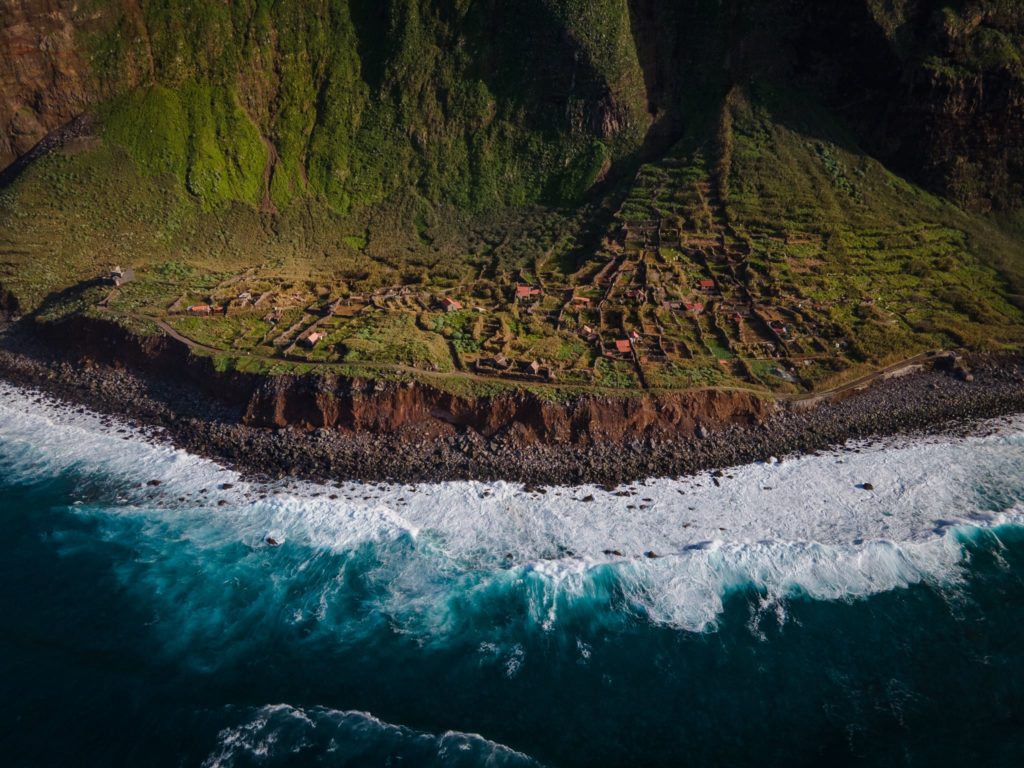Madeira is one of the few remaining hidden gems of Europe. Few other places on the continent can offer such an incredible mix of hiking, natural splendor, gastronomy, and hospitality.
There’s a good reason why we at Epic have chosen Madeira as our home away from home and organize hiking tours here multiple times every year: we just love the place.
When helping clients to visit though we are often asked: “what’s the best way to get to Madeira?” This is a fair question and one that deserves an in-depth answer.
There are lots of obvious ways to travel to Madeira, and some not so obvious. Flying will be the most convenient option for most but they’ll need to be savvy with airline booking engines if they want to get the best deals. Should flying not be an option, arriving in Madeira by boat is also an option, despite the lack of a regular ferry.
In this post, we’re going to break down the different ways of traveling to Madeira and provide some additional tips on how to do so cheaply. This article is great for those joining us on an upcoming trip or are planning their own.
Where is Madeira Located?
Madeira is one of the many islands of Macaronesia that are found in the Atlantic Ocean off the coast of Europe and North Africa. The other island chains include The Canary Islands, the Azores, and Cabo Verde.
As the crow flies, Madeira is about 1000 km or 600 miles from mainland Portugal and 600 km or 350 miles from the coast of Morocco, the nearest African nation. That’s just far enough to be somewhat isolated but not so far away as to be totally in the middle of nowhere.
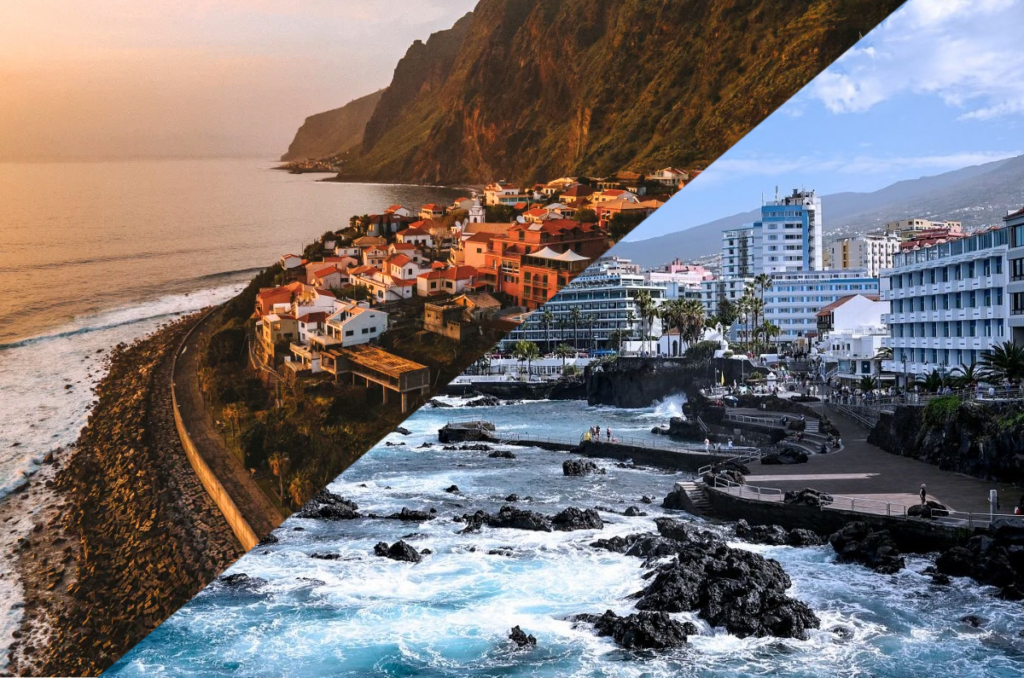
Due to its location, Madeira really strikes that balance between being exotic and familiar. Geographically, it is unlike anywhere else in Europe yet still retains a bit of continental charm, with its colonial-era architecture and laid-back lifestyle. It really has a frontier feel on the island, which we love.
The climate of Madeira is also quite unique, being subject to not only maritime effects and the Gulf Stream but also a relatively southerly latitude. All-in-all, Madeira manages to stay comfortable year-round, not getting as hot as the Canary Islands but not as wet as the Azores.
How Do I Travel to Madeira Then?
Because it’s an island in the middle of the Atlantic, there are really only two ways to get there: by air or by sea. That means you’ll either be flying to Madeira or taking a boat of some sort.
By far, flying is the most popular option for traveling and for most the best way to get to Madeira. There are direct flights to Madeira from many major European cities and many more connecting flights. Of the 1.5 million tourists it receives each year, the grand majority opt to fly.
Sailing on the other hand means you can bring your furry friend or even a car sometimes, but is often less convenient due to a lack of options, which are often vague, and longer travel times.

There are of course pros and cons to each method of traveling to Madeira. Flying is usually the fastest option if you’re traveling from mainland Europe and often the cheapest (if you use a low-cost carrier).
Below we break down each option for traveling to Madeira.
How Far is Madeira from the Azores?
The Azores are Portugal’s other semi-autonomous island region, along with Madeira. The two archipelagos are about the same distance apart as Europe is from Madeira: 1000 km or 600 miles.
That being said, the two island groups are quite distinct: Madeira is more temperate and almost semi-tropical while the Azores are much more damp but lush. Between the two, Madeira is arguably considered by most to be the more popular “holiday” destination.
Unfortunately, there is no boat in any form that connects Madeira directly to the Azores. The only way to reach Madeira from the Azores is by flying or taking a cargo ship from Lisbon. Luckily, there are daily flights between the two – courtesy of the exceptional Azores Airlines – which are usually affordable.
Ready to find the lost treasures of the Atlantic?
Arriving in Madeira by Plane
Most people will travel to Madeira by plane as flights are plentiful and, depending on the time of year, relatively cheap.
Flying to Madeira is a good idea for several reasons:
- It’s the fastest method
- There are numerous routes you can take
- Prices are usually competitive
- You’ll arrive close to Funchal
Madeira’s major airport is Cristiano Ronaldo International, located about 20 minutes away from the largest city on the island: Funchal. This is a small but efficient airport with some ingenious human engineering. Once you land, you should be out of the airport, bags in hand, in less than 30 minutes.
From the airport, you can hire a taxi, take a public shuttle, or rent a car (our preferred method of getting around) to get to Funchal.
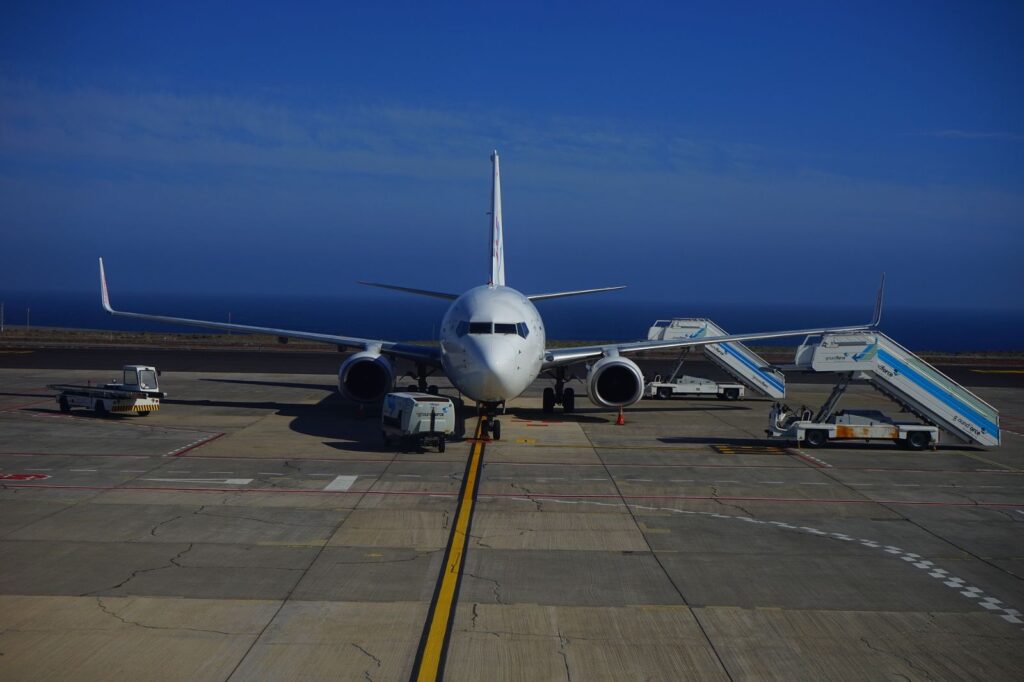
While there are many international flights to Madeira, most passengers will connect via Lisbon and Humberto Delgado International. This is the capital of Portugal and a hub for many regional carriers, such as TAP, most of which fly to Madeira. Travel time between Lisbon and Madeira is only about 90 minutes.
You may also arrive in Madeira from Porto: Portugal’s second-largest city. At 2 hours, flight times are a bit longer but still not bad. If you have the opportunity, we recommend taking a long layover in Porto as it is one of the most charming cities in Europe.
The Most Convenient Flights to Madeira
“Convenience” really comes down to the individual traveler. Some may want the cheapest flight possible and are willing to take longer routes while others want to get there as fast and with as few connections as possible.
If you want to fly to Madeira quickly, you’ll want to book a direct flight. Luckily, there are many direct international flights to Funchal from many European countries: you can find a flight to Madeira from almost any major city in Western Europe and the Baltics. There’s even a direct flight from the USA via JFK these days!
Note though (and this is a significant “note”) that most of these routes between Madeira and European cities are highly seasonal. That means that outside of the busy summer period, you are going to have a lot fewer options. The only routes that consistently serve the island year-round are those from the UK, Germany, Belgium, and France.
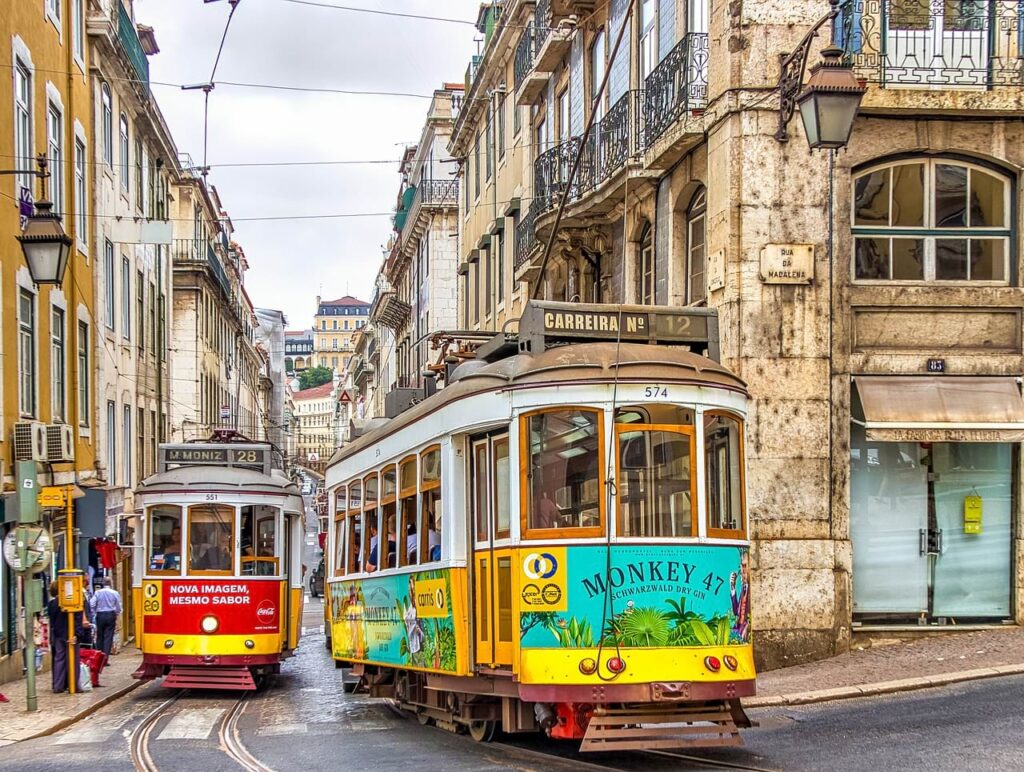
The grand majority of flights to Madeira are also with “low-cost” carriers, like Ryanair, EasyJet, Wizzair, and Transavia. This is good for those who want to save money on their trip to Madeira, but be aware that tickets on these airlines can still be expensive if you book last second or purchase add-ons.
The least expensive time to fly Madeira is variable. Generally, late autumn and early spring are safe bets – just avoid any major holidays. If you want the cheapest option possible, then you’ll have to be flexible about travel times and even then you should expect to pay at least 150 euros one way for a ticket to Madeira.
Average Travel Times and Prices Between Madeira and Major Cities
Below you will find a table with a list of the most popular places in Europe to fly from to Madeira:
| City | Average Flight Time (hours) | Average Ticket Cost (one-way) |
|---|---|---|
| Frankfurt | 4.0 | $150 - $300 |
| Munich | 4.0 | $150 - $30 |
| London | 3.5 | $100 - $250 |
| Porto | 2.0 | $50 - $150 |
| Düsseldorf | 4.0 | $150 - $300 |
| Amsterdam | 4.0 | $150 - $300 |
| Berlin | 4.5 | $150 - $300 |
| Geneva | 3.5 | $150 - $300 |
| Lisbon | 1.5 | $50 - $150 |
| Stuttgart | 4.0 | $150 - $300 |
| Manchester | 4.0 | $150 - $300 |
| Paris | 3.5 | $150 - $300 |
| Vienna | 4.5 | $150 - $300 |
| Hamburg | 4.5 | $150 - $300 |
| Prague | 4.5 | $150 - $300 |
Porto Santo: Madeira’s Alternative Entryway
Madeira actually has two international airports: one on the main island near Funchal and another on neighboring Porto Santo.
Porto Santo is a tiny spit of an island off the east coast of Madeira that is mostly rock and sand. It is sparsely populated and there’s frankly more to do on Madeira Island, unless of course, you like sunbathing. The beaches of Porto Santo are much closer to what you expect from a typical tropical getaway (Madeira’s are conversely rocky and rugged) and so Porto Santo is generally more popular with beachgoers. Think a tinier version of Fuerteventura in the Canary Islands.
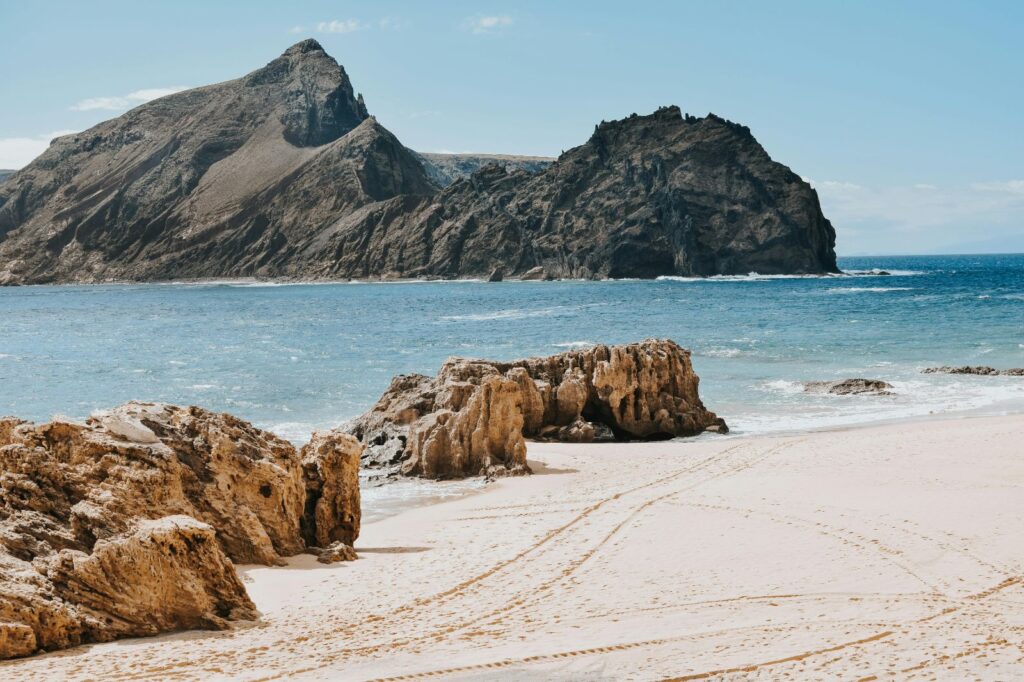
Because some people would rather spend all of their time on a beach or in a resort, there are now direct flights to the island. They are almost exclusively seasonal though, outside of one route from Lisbon that is available year-round. If you want to arrive in Madeira via Porto Santo, then you are almost entirely restricted to the summer.
Still, having an extra port of entry is convenient for those traveling to Madeira during the busy season. You might consider arriving there first and spending a few days lounging before catching the ferry over to Funchal.
Arriving in Madeira by Boat
Arriving in Madeira by sea is a bit trickier than one would think. While it is possible to travel to Madeira by boat, it’s not that straightforward.
First and foremost, it must be pointed out that when someone says “I’m arriving in Madeira by boat” they’re most likely referring to a cruise ship. These, not passenger ferries, make up the grand majority of sea arrivals on the island.
As of August 2024, there are no regular ferries to Madeira from the Canary Islands, the Azores, or anywhere else outside the island’s immediate vicinity.
The only ferry around is from Funchal to the nearby desert island of Porto Santo. These run very frequently and take only 2.5 hours or so.
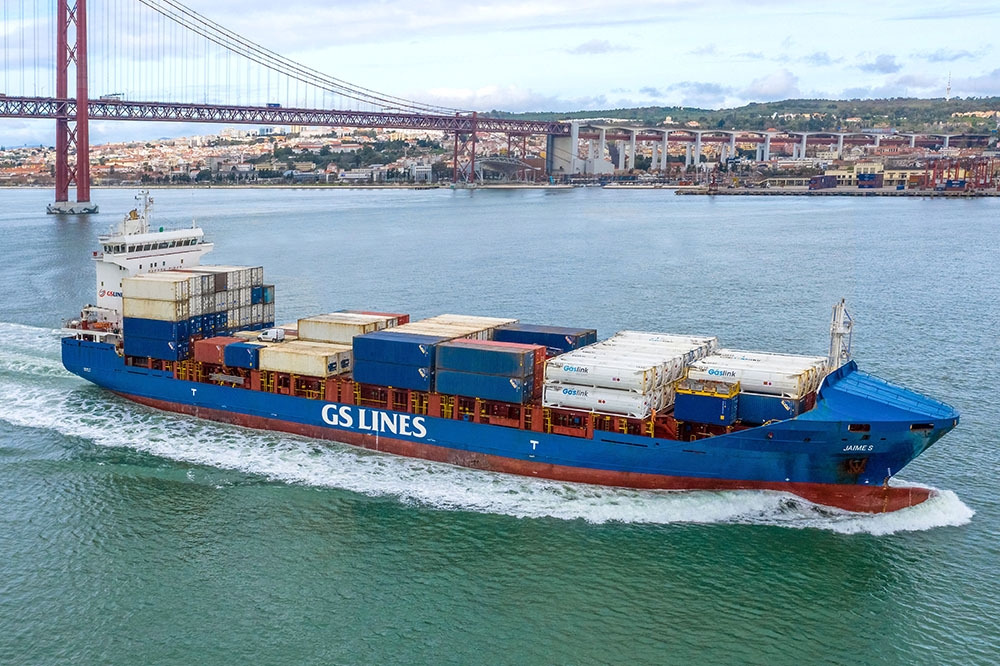
Never fear though! It is still possible to travel to Madeira by boat for those intrepid travelers. There are cargo ships that regularly sail between Madeira and Lisbon. While these ships are normally intended for commercial use, they do sometimes allow regular civilians to travel in their passenger cabins.
Since 2023, GS Lines has allowed regular passengers on their cargo ships. The voyage takes 48 hours to complete and costs 180 euro. Passengers are restricted to 20 kg and must have Personal Accident Insurance to travel. Ships depart weekly on Saturdays and arrive on Monday.
We’ve heard reports of pets being allowed on the cargo ships but nothing about vehicles. The latter might be possible but you should contact GS Lines directly for the feasibility of this and current rates. Be sure to pack extra supplies for your extended journey to Madeira.
GS Lines also serves the Azores, Canary Islands, Cabo Verde, and Guinea-Bissau.
Tips for Traveling to Madeira Cheaply
To save money on airfare when traveling to Madeira, consider the following tips:
- Book Early: Airfare prices generally increase as your departure date approaches. For international flights, it’s often best to book 3-6 months in advance. Avoid booking too far out, as prices can be higher a year in advance than closer to the departure date.
- Be Flexible with Travel Dates: Flying on less popular days, such as Tuesdays, Wednesdays, or Saturdays, can significantly lower your costs. Avoid peak travel seasons like mid-June to August. Instead, consider shoulder seasons (spring or fall), which offer cheaper flights and fewer crowds.
- Use Fare Alerts: Set up fare alerts on platforms like Google Flights or Expedia to track price drops on your preferred routes. This helps you monitor and book when prices are at their lowest.
- Explore Nearby Airports: Consider flying into alternative airports near Madeira, like Porto Santo, if possible, or even booking a connecting flight from a major hub to Madeira. Sometimes, booking a separate short flight to a major hub can save money compared to flying directly from your home airport.
- Utilize Points and Miles: If you have airline miles or credit card points, use them to book your flight. This can be particularly valuable during peak travel times when cash prices are high.
Get to Madeira Quick and Easy
Madeira is a joy to visit. By following the tips outlined in this guide you can do so affordably and comfortably too.
Ultimately, flying is the best way to get to Madeira: it’s cheap, convenient, and accessible to most travelers throughout Europe.
How to fly and where to fly from is a more nuanced question. Ask yourself if you want to prioritize saving money or getting to the island as quickly as possible.
If you want to save some dough, consider flying during the shoulder seasons, keep a close eye on flights with low-cost carriers, and be willing to connect somewhere.

If, on the other hand, you just can’t wait to get to Madeira, book a direct flight from the nearest airline hub and look for those direct flights.
Should flying not be possible, there are maritime options. There is a cargo ship running between Lisbon and Madeira that you can hitch a relatively comfortable ride on.
Enjoy your time on the island and safe travels there. We hope to see all of you someday on one of our active holidays in Madeira – reach out now if you’re interested!

